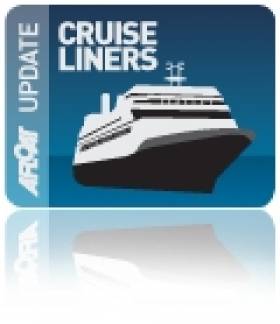Displaying items by tag: North Custom House Quay Cork City
Cork Cruise Caller Line-Up for 2012
#CRUISE LINERS – The Port of Cork is to welcome 60 cruise vessels this season, an increase on 2011 levels when 53 calls were made, bringing over 100,000 passengers and crew to the region, writes Jehan Ashmore.
According to UK Consultants GP Wild, the average in-transit spend per passenger, while visiting an Irish port is between €73- €100 which provides a significant contribution towards the local tourism economy.
Last year Cork won 1st place for 'Best Destination Experience (Organised)' in the world and 2nd place for 'Best Port Welcome' in the Dream World Cruise Destinations Awards.
Fred Olsen Cruise Lines Balmoral is the first caller for 2012 when she is to dock at Cobh in April. Larger cruise ships to visit during the season include Celebrity Eclipse, Emerald Princess, Independence of the Seas, Costa Deliziosa and Caribbean Princess.
In addition Cunard Line's Queen Elizabeth is to return to Cobh in August. Her inaugural Irish visit was in September last year, when the 90,000 tonnes vessel called firstly to Dublin followed by Cobh, to read more click HERE.
For a list of the cruise schedule, click HERE, noting several calls are to Ringaskiddy and North Custom House Quay in Cork City.























